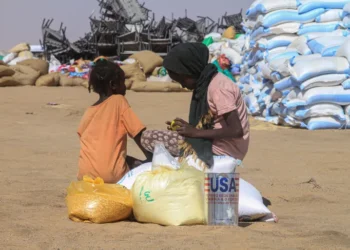The Food and Agriculture Organization (FAO) has estimated that Fall Armyworm (FAW) has contributed to worsening food security for 26 million people across the globe.
As a result, the FAO has described the FAW as one of the destructive pests jeopardizing food security across vast regions of the globe. As a result, the FAO has warned that the pest’s voracious appetite means that in many parts of the world, food, fuel, and fibre are at severe risk.
Meanwhile, the FAO is calling for a coordinated approach to fight FAW since it is difficult to eradicate the bug. FAW primarily feeds on maize crops but also wheat, sorghum, millet, sugarcane, vegetables, and cotton.
This notwithstanding, the Director-General of the FAO, QU Dongyu hailed the progress in the fight against the FAW while urging renewed drive and scaling up of efforts. Qu was speaking at the latest virtual meeting of the Steering Committee of the Global Action for FAW Control. Over 40 participants including FAO Members, international experts, and key research partners attended the event.
FAW moving towards Australia and parts of Oceania
Moreover, the FAO stated that the FAW has dramatically spread eastwards from the Americas in the last five years. It has already established itself in most parts of Africa and Asia. However, the FAO indicated that it is now moving to Australia and parts of Oceania lately.
“More than 70 countries are now affected; there are fears that the Mediterranean fringes of Europe could be next”.
Aside from the institutional level, FAO has been working to assist those whose livelihoods are most directly threatened. In 2020, despite limitations posed by the COVID-19 pandemic, nearly a million and a half African farmers were trained. The farmers were trained on scouting and monitoring the appearance and spread of FAW. They also learned about using bio-pesticides and pesticides, as well as nature-based solutions for FAW management.
“Before, from this 10-hectare marshland, we used to harvest 5 to 6 tons. But in 2017, this dropped to 3.5 tons. We did our best to fight the worm but had nothing to show for it. When the FAO project came, we understood more about FAW and the technologies it takes to fight it. The FAW mobile phone application I received allows me to collect and share information. Then the agronomist comes and inspects the field. Production has gone back up. Today, from our 10 hectares, we’re harvesting 7 tons”
Cyril Nzagumandore- A beneficiary of FAO’s program.
Digitizing the fight against FAW
The App on Nzagumandore’s phone is part of the digital tools FAO has put forward to tackle the FAW challenge. Available in 29 languages, it analyses manually entered data and photos and uses a mix of artificial and human intelligence, to detect the presence of the worm and offer guidance. Current proposals are to enhance the system with a predictive capacity. This would warn of impending invasions by combining more sophisticated data. This include meteorological patterns, insect reproduction cycles, and the presence of other host plants in the vicinity.
Overall, thousands of experts and technicians also received training from FAO last year in Africa and Asia. This includes the mass rearing of natural enemies of FAW, such as particular types of wasps.
While lauding recent progress, the Director-General also stressed the need for more funding. He revealed that a Working Group on Resource Mobilization had been set up to that effect. The meeting agreed on the need to embed the fight against FAW within the wider food security and nutrition strategies. This will help increase awareness and expand donor engagement. Meanwhile, the FAO Director-General has called for stronger, timely national and regional monitoring.
READ ALSO: COVID-19 impact triggers $5 billion in capital flows from Africa























